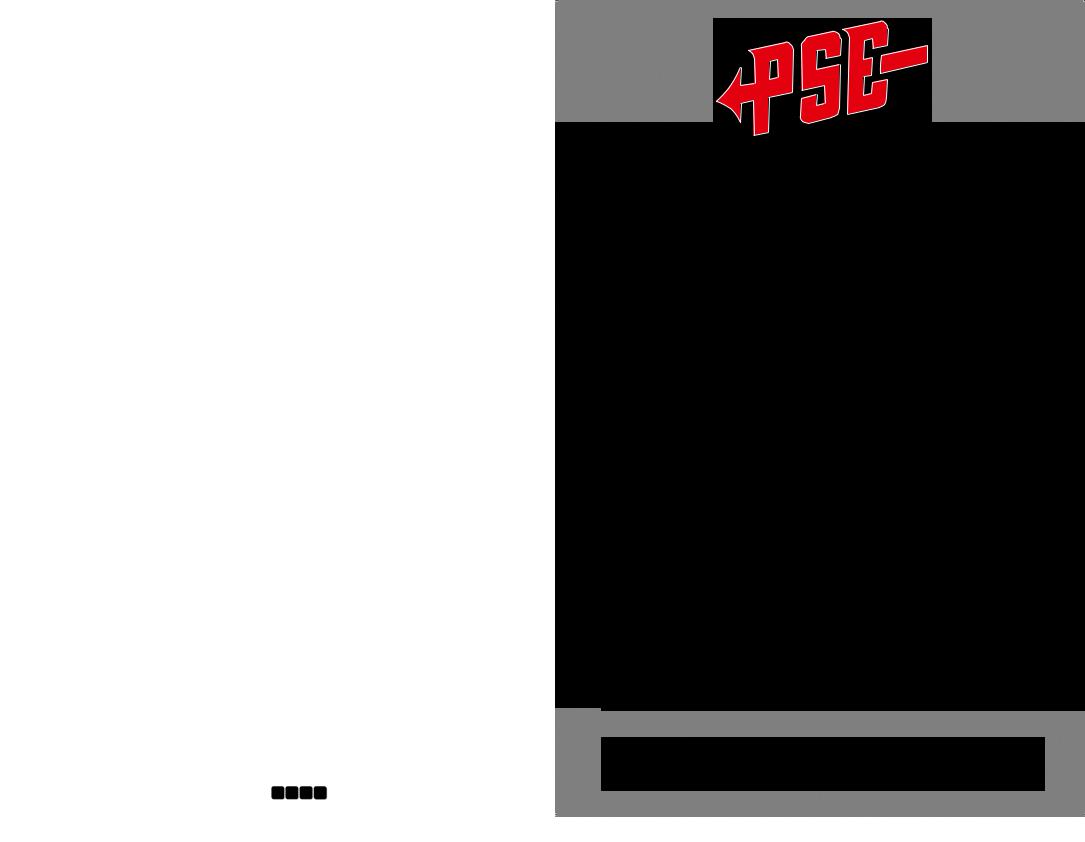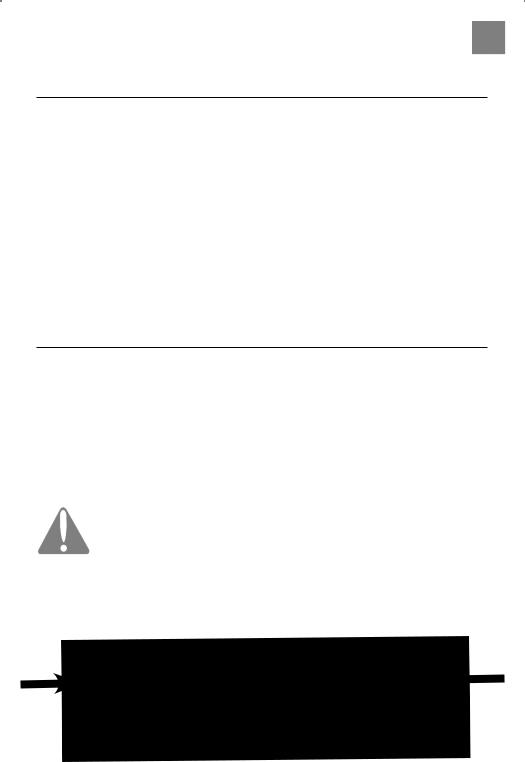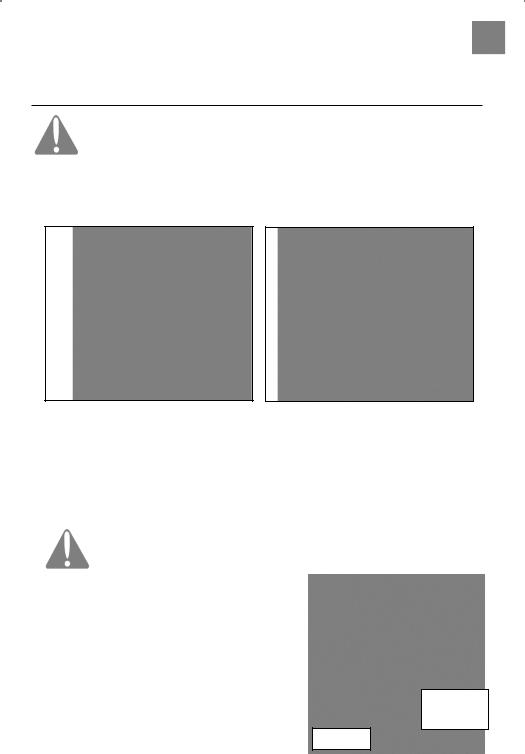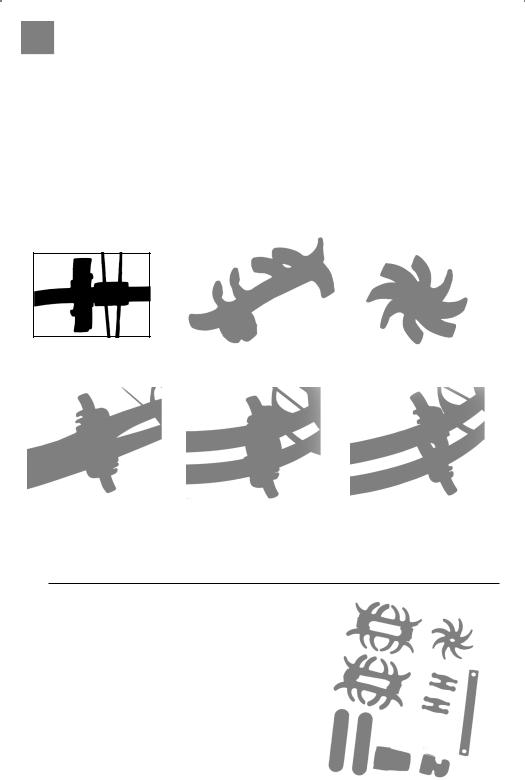PSE Archery Bow 2014 User Manual

COMPOUND BOW USER’S GUIDE

Thank |
You! |
|
Thank you from the entire PSE family for purchasing a PSE bow! Your bow was manufactured from the finest materials available and
handcrafted with pride in the USA. With proper care you will enjoy the use of this product for years to come.
Please read this entire booklet before shooting or adjusting your bow. Remember, many adjustments to a compound bow require the use of a bow press. Whenever shooting a bow, be certain of your target as well as what else lies down range.
NOTE: IMPORTANT WARRANTY REGISTRATION INFORMATION IS ON PAGE 43
pse compound bow owner’s information
Fill in the following information for your personal records.
Bow Model
Bow Serial Number:
See page 43 for the serial number location on your bow.
Purchased From:
Purchase Date:
Draw Length |
|
Draw Weight |
PAGE 2

Compound Bow |
|
USER’S GUIDE |
|
index |
|
Subject |
Page |
Welcome to PSE and general product information.......................................... |
4 |
Compound bow terminology............................................................................ |
5 |
PSE cable configurations.................................................................................... |
6 |
PSE X-Tech bow press info............................................................................. |
7-9 |
Installation of accessories................................................................................. |
10 |
Other adjustments............................................................................................ |
10 |
Setting up your bow......................................................................................... |
11 |
Flexslide™ installation and adjustments.......................................................... |
12 |
BackStop™ 2 installation and adjustments..................................................... |
12 |
Sting Stop™ installation and adjustments....................................................... |
13 |
Limb bands and cable guard dampers.......................................................... |
14 |
Changing the FlexSlide rod.............................................................................. |
15 |
PSE asymmetric idler......................................................................................... |
15 |
Cam adjustments............................................................................................. |
16 |
Draw stop information..................................................................................... |
17 |
Limb stop adjustments..................................................................................... |
17 |
PSE Pro Series bowsdraw setting charts........................................................ |
18 |
PSE Mainline bowsdraw setting charts.......................................................... |
19 |
PSE Morph™cam information.......................................................................... |
21 |
PSE Surge™with Morph™cam settings charts........................................... |
22-23 |
PSE Fever™One with Morph cam settings charts..................................... |
24-25 |
PSE Vision™cam information........................................................................... |
27 |
PSE Vision™ with Vision™ “performance” cam setting charts.................. |
28-29 |
PSE Vision™ with Vision™ “grow with you” cam setting charts................ |
30-31 |
PSE Fever™ with Vision™ “performance” cam setting charts................... |
32-33 |
PSE Fever™ with Vision™ “grow with you” cam setting charts................ |
34-35 |
PSE Mini Burner™ XT with Vision™ “performance” setting charts........... |
36-37 |
PSE Mini Burner™ XT with Vision™ “grow with you” setting charts......... |
38-39 |
PSE limited lifetime warranty information.................................................... |
42 |
PSE warranty registration............................................................................. |
43 |
PAGE 3

Compound Bow
USER’S GUIDE
General Operating Instructions
•Always inspect your bow thoroughly before each shooting session to insure that it is in good working order. Check for worn, loose or missing components and have them replaced at an authorized PSE dealer as required, i.e. bushings, spacers, etc.
•Inspect your arrows to insure that they are straight, undamaged and that each nock is in good condition. A cracked nock can break when fired from the bow and cause the bow to “dry fire” resulting in possible injury to the archer and damage to the bow. Dry-firing is drawing and releasing the bowstring without an arrow on the string.
•When purchasing arrows for your bow, consult the selection chart from the arrow manufacturer and select the correct arrow for your application. Always use an arrow that is at least 5 grains per pound of peak bow weight. Failure to do so could cause personal injury and damage to your bow.
Bow Maintenance
Your PSE bow will give you many years of use if maintained and cared for properly.
It is a mechanical device that is subject to wear and therefore must be inspected periodically and given the proper adjustments and service. It is recommended that this service be performed at least once a year by an authorized PSE dealer. All components, including string, cables, axles, e-clips, limbs and riser should be carefully inspected for damage or wear.
STRINGS AND CABLES
Apply a light coat of high quality bowstring wax to your string and cable each time you shoot your bow. It is especially important NOT to wax the area of the string that wraps around the idler wheel. This area of the string should be treated with a cam lubricant. This will help reduce wear on your string and cables. Inspect the string and cables regularly and replace them when there is evidence of wear, every 5000 shots or every 12 months.
IMPORTANT: Before servicing any PSE bow in a bow press, back out each limb bolt the maximum number of turns from bottom.
•Keep synthetic cables and strings waxed. Apply bow string wax to your synthetic cables and string before each shooting session.
•Strings and cables must be replaced periodically. A worn cable or string can suddenly break causing serious injury to the archer and damage to the bow. It is recommended that the string and cables be replaced at least every 5,000 shots or 12 months.
PSE recommends that this work be performed by an authorized PSE dealer.
•Always store your bow in a cool dry place. High temperatures, such as those that can occur in the interior of a vehicle, can cause serious damage to your bow.
•After use in high humidity or damp conditions, wipe metal components of your bow with a light oil.
 safety
safety
As with any weapon, safe operation of your PSE bow must always be the highest priority.
ALWAYS WEAR SAFETY GLASSES WHEN HANDLING A BOW.
Do not attempt to use your bow without proper instruction. Doing so can result in serious injury.
a.Never dry-fire your bow. Dry-firing is drawing and releasing the bowstring without an arrow on the string. Dry-firing will likely cause damage to the bow and serious injury to the archer. In the event of a dry-fire, have an authorized PSE dealer inspect the bow for damage.
b.Always be sure of your intended target as well as what lies behind the target area. An arrow can travel a considerable distance, so it is important to have a safe and sound backstop.
c.If you draw a bow and need to let it down, do so in a slow and careful manner. Keep your support arm straight and prepare for a rapid and violent let-down. Avoid hitting your hand on protruding accessories such as the cable guard or quiver. Keep your head and face back and out of danger during let-down. Never draw a bow with a peak weight above your comfort level. Always use a wrist sling when drawing a bow.
d.Never modify any part of the bow or its components by drilling extra holes or removing material. This voids the warranty and presents safety problems.
e.It is not recommended to time the bow using a draw board unless the draw board is operated by a winch or other mechanical pulling device.
PAGE 4

Compound Bow
USER’S GUIDE
compound bow terminology
TOP
LIMB
BAND
TOP
LIMB
BOLT
TOP CAM (HYBRID DUAL CAM MODELS)
or IDLER WHEEL (SINGLE CAM MODELSHOWN)
AXLE
LIMB
TOP LIMB
BOW QUIVER
HOOD AND FOAM
SIGHT
SIGHT
PINS
QUIVER BRACKET
AND QUICK-MOUNT*
TUNING
ALIGNMENT MARK 
ARROW CLIP 
ARROW SHELF
GRIP
STABILIZER arrow
BOTTOM
LIMB BOLT
BOTTOM
LIMB
BOTTOM
LIMB
VANE
OR
FLETCHING
PEEP
SIGHT
 TUBE
TUBE
CABLE GUARD
DAMPER
CABLE  SLIDE
SLIDE
CABLE  GUARD ROD
GUARD ROD
CABLE GUARD
ADJUSTMENT SCREW
ARROW
REST BOW
SLING
 ™2* (SHOWN) OR STINGSTOP™*
™2* (SHOWN) OR STINGSTOP™*
 BACKSTOP™*
BACKSTOP™*
ADJUSTMENT SCREWS
RISER
DRAW STOP
MODULE
POSITION HOLES
AXLE
 BOTTOM CAM
BOTTOM CAM
BOTTOM
LIMB BAND
NOCK
* = depends on bow model
PAGE 5

Compound Bow |
|
|
||
USER’S GUIDE |
|
|
||
cable configurations |
|
|
||
one cam bow |
|
|
||
Idler wheel |
|
|
STRING |
STRING |
|
|
|
|
|
|
|
buss cable |
|
|
buss cable STRING
STRING
STRING
bottom cam hybrid cam bow
top cam |
|
control |
|
|
cable |
|
|
STRING |
|
|
buss |
|
|
cable |
STRING
buss cable
control
cable bottom cam two cam bow
bottom cam two cam bow
top cam
buss |
STRING |
|
cable |
||
|
buss cable
buss |
STRING |
cable |
|
buss cable
bottom cam
PAGE 6

Compound Bow
USER’S GUIDE
pse X Technology
PSE X Technology bows come with many unique features that will enhance your archery experience.
USING A BOW PRESS WITH X TECHNOLOGY BOWS
ALL PSE X Technology bows MUST be serviced in an approved bow press and require special consideration. Do not attempt to service these bows in any bow press without reviewing the procedures described herein.
Use of a non-approved bow press or improper use of an approved bow press WILL result in damage to the bow and possible personal injury. Damages incurred by improper use or maintenance will not be covered under the warranty. See the PSE website at www.pse-archery.com for a list of approved bow presses.
There are two basic types of approved presses available: compression-type and pull-type. (Pg8)
COMPRESSION-TYPE BOW PRESS:
This type of press pushes in a horizontal direction against the tips of the limbs. No other support for the bow is required.
When using a press of this type, back each limb bolt out the maximum number of turns indicated on your bow’s hang tag. Position the bow in the press and crank press inward to apply a compression force against the limb tips as shown below.
Compress ONLY far enough to loosen the string and cables. Over compressing could break the limbs and cause personal injury.
Any damages incurred from over-compressing will not be covered under warranty.
Compression-type bow press
X Technology continued on next page
PAGE 7

Compound Bow
USER’S GUIDE
pse X Technology USING A BOW PRESS
pull-type bow press
PULL-TYPE BOW PRESS:
This type of press pulls the riser of the bow in a vertical direction between rollers that compress the limbs.
When using this type press it is very important to position the rollers and pressure points correctly! See illustration above.
Back each limb bolt out the maximum number of turns indicated on your bow’s hang tag and position the pressure points on the riser as close to the limbs as possible WITHOUT making contact with the limbs as shown in the photo below.
The pressure points must not contact the limbs at any time during servicing.
pull-type bow press
X Technology continued on next page
PAGE 8

Compound Bow
USER’S GUIDE
pse X Technology USING A BOW PRESS (Continued)
Position the limb rollers outward on the limbs so that when the riser is pulled down the bow does not slip through/between the rollers before releasing tension on the string and cables. The rollers must be at least 4” from the limb pockets or the limbs
will break. While placing tension on the limbs, BE VERY CAREFUL NOT TO PULL THE RISER
DOWN TOO FAR. DEFLECT THE LIMBS JUST ENOUGH TO REMOVE THE STRING AND CABLES. Never allow the rollers to go past the end of the limb belly (thinnest part).
Service such as peep and string mounted vibration damper installation and string replacement can be performed with a “Pocket Press” portable bow press available from your local PSE dealer. These pocket presses are available for alternate axle-to-axle lengths and cam types.
servicing bows with pse ft cams (pse full throttle™)
CAUTION • CAUTION • CAUTION!
When servicing bows with PSE FT cams, such as the |
|
|
Full Throttle™, it is important to use a bow press |
|
|
that has enough clearance for the cams. |
|
|
On some bow presses the cams may make |
|
|
contact with the area shown in Figure 1 when |
|
|
compressing the limbs. Watch very carefully as the |
|
|
bow is compressed. If either cam comes in contact |
|
|
with the bow press, STOP IMMEDIATELY |
|
|
or permanent damage to bow |
|
|
components may occur. |
|
|
Contact the bow press manufacturer for |
Figure 1 |
|
further information. |
||
|
Cam may hit here
PAGE 9

Compound Bow
USER’S GUIDE
Installation of Accessories
Arrowrest/Overdraw: The arrowrest or overdraw should be installed according to the instructions received with the product. It is usually mounted to the riser in the threaded hole on the side opposite the shelf (Hole “A”) using the hardware provided with the arrowrest or overdraw.
Sight: The sight should be installed according to the instructions received with the product. It is usually mounted to the riser in the threaded holes (Holes “B”) on the side opposite the shelf using the hardware provided with the sight. Some bows are equipped with multiple sight mounting holes which allow the sight to be moved up or down.
Stabilizer: The stabilizer should be mounted according to the manufacturer’s recommendation. It is usually mounted in the threaded hole on the front of the riser (Hole “C”).
Bow Sling: The bow sling attaches to the riser of the bow generally with the stabilizer. If a stabilizer is not used, attach the sling to the riser with the correct sized bolt (5/16” - 24) using the hole provided for the stabilizer (Hole “C”).
Holes
B
Hole
A
Other Adjustments
Draw Weight: Your bow is factory-set to within 2 lbs. |
|
|
|
of the peak draw weight indicated on the bow hang tag and the |
Hole |
||
last 2 digits of the serial number. Changes in draw weight can |
|||
be made by turning the limb bolt in or out. Before making any |
C |
||
changes in weight, turn the limb bolt clockwise to the bottom |
|
||
position. Never use extreme torque when turning the bolt or |
|
||
damage to the limb may occur. The limb bolt may then be |
|
|
|
turned counterclockwise to obtain the desired weight, but NEVER |
|
||
more than the number of turns indicated on the hang tag. |
|
|
|
Adjust each limb exactly the same. (See note and Fig. A below) |
|
||
Limb |
|
|
|
bolt |
|
|
|
|
|
CAUTION: On some bow models, |
|
|
|
the limb bolt locking screw, limb |
|
Fig. A |
|
support screws or pocket tang |
|
|
locking screw MUST be loosened |
||
|
Limb |
||
|
BEFORE adjusting. |
|
|
tang |
support |
|
|
locking screw |
screw |
|
|
Your Authorized PSE Dealer is supplied with technical information on PSE bows and cams. Please see your Dealer for assistance when making these adjustments.
PAGE 10

Compound Bow
USER’S GUIDE
Setting-Up Your Bow
Nocking Point Placement:
Arrow rest mounting hole
Tuning
Mark
Finger shooters: Install the nocking point so that the arrow passes the center of the arrow rest mounting hole and runs slightly point-down relative to the tuning mark on the window of the bow.
Release Aid shooters: Install the nocking point so that the arrow passes the center of the arrow rest mounting hole and runs parallel to the alignment mark on the window of the bow.
Arrow rest Adjustment:
When shooting with a release aid, the in/out position of the arrow rest should be adjusted so that the arrow runs parallel with the tuning mark on the shelf when viewed from above. When shooting with fingers the arrow should point slightly outside the tuning alignment mark on the shelf.
NOTE: Tuning alignment marks are for reference only. Adjustments will likely be necessary to nocking point and in/out position during tuning
Tuning
Mark
Alignment
Mark
Sight Adjustment:
When adjusting the sight pin locations, always remember to “follow the group”. That is, if the shot group is to the left of the target, move the sight pins to the left. If the shot group is low, move the sight pins down.
••
•
Cable Guard Adjustment and installation:
Install the cable guard as shown in |
|
|
Figure A. Adjust the cable guard so the |
|
|
cables just clear the arrow vanes. On bows |
|
|
using an offset cable guard rod, adjustments |
|
|
must be done with the rod in the up position |
|
|
(approximately 2 o’clock) as shown in |
|
|
Figure B (10 o’clock for left handed bows). |
|
|
Over-rotating an adjustable cable guard |
|
|
creates excessive arrow clearance and may |
|
|
cause the cable to track incorrectly on the |
Figure A |
Figure B |
wheels and cause personal injury and/or |
|
|
damage to the bow. |
|
|
PAGE 11

Compound Bow
USER’S GUIDE
flexslide™installation and adjustment
The PSE FlexSlide™ cable guard system is based on the same advanced design and analysis used to create PSE Limbs. The flex-tuned design and adjustable offset are engineered to create more consistent lateral loads through the draw cycle and improve bow accuracy.
1.The standard factory setting adjusts the FlexSlide™ to its bottom position for maximum arrow clearance.
2.To adjust the lateral position, turn the adjustment screw counterclockwise to reduce arrow clearance or clockwise to increase arrow clearance.
3.After making adjustments to your FlexSlide™, check both arrow clearance and BackStop™ clearance. When drawing the bow, the buss cable should never contact the arrow shaft or any part of the Backstop™.
4.If any contact exists, tighten the adjustment screw to create adequate clearance. One full turn on the adjustment
screw will move the slide approximately 1/8”.
NOTE: Lateral adjustments to the FlexSlide™ may affect arrow tuning.
FlexSlide  Pivot with Alignment Tabs
Pivot with Alignment Tabs
FlexSlide Limb
Low Friction
FlexSlide Rod
backstop™2 instructions |
At rest At full-draw |
|
FlexSlide Washer with Alignment Tabs
Lateral
Adjustment
Screw
Note: Many PSE bow models come from the factory with the Backstop™ 2 installed.
These instructions refer to reinstallation or adjustment if needed after making adjustments to your PSE bow.
1.Remove the set screws from the base using a T8 Torx wrench.
2.Install the Backstop™ 2 into the threaded hole below the grip on the string-facing side of the bow.
3.Extend the Backstop™ 2 until it makes contact with the string. Mark the string ¼” above and ¼” below where it makes contact with the string. Remove the Backstop™ 2 and add serving to that area of the string. Reinstall the Backstop™ 2.
4.Securely tighten the base to the bow handle.
6.Extend rod from base. Install the set screws to secure rod in this position.
Tighten set screws. It is desired to have some clearance (approximately 1/16”) between the bumper and the bowstring at brace.
7.Rotation instructionsAdjust the Backstop™ 2 to the desired position and tighten the rotator screw. The Backstop™ 2 design allows for the bumper to be positioned so the string strikes the center of the bumper. It is desired to have some clearance (approximately 1/16”) between the bumper and the bowstring at brace.
 Serve string in this area.
Serve string in this area.
|
Alignment |
Set screws |
PAGE |
holes |
|
|
|
|
12 |
|
|

Compound Bow
USER’S GUIDE
sting stop™ instructions
Note: Some PSE bow models come from the factory with the PSE Sting Stop™ Backstop installed. These instructions refer to reinstallation or adjustment if needed after making adjustments to your PSE bow.
1.Thread the Sting Stop™nut all the way up toward the bumper of the Sting Stop™ rod.
2.Thread the Sting Stop™rod into the threaded hole below the grip on the riser. The bowstring will need to be displaced slightly to one side to thread the rod into the bow.
3.Unscrew the Sting Stop™until the rubber bumper approaches the bowstring. Mark the string 1/4” above the rubber bumper in its highest position and 1/4” below the bumper in its lowest position. Remove the Sting Stop™ and add serving to the marked area of the string. Reinstall the Sting Stop™.
4.Adjust the Sting Stop™to the desired position and tighten the Sting Stop™ nut against the riser. The Sting Stop™ design allows for the bumper to be positioned so the string strikes the center of the bumper. It is desired to have some clearance (approximately 1/16”) between the bumper and the bowstring at brace. It is preferred to have the Sting Stop™rod in the up position if possible, but may not be possible in order to achieve the necessary clearance and contact point.
Serve string in this area.
PAGE 13

Compound Bow
USER’S GUIDE
installing limb bands and cable guard damper
If your bow is equipped with a Cable Guard Damper it should be even with the cable slide when the bow is at rest. More than one Cable Guard Damper can be used.
If your solid limb bow is equipped with limb bands, the proper placement of the bands is approximately 1/8” beyond the limb fork.
If your split limb bow is equipped with limb bands, the proper placement of the bands is at least 1/4” away from the cam (align the band with the end of
the limb graphic).
Cable Guard Damper |
Limb Band Damper |
|
Cable Guard Damper |
||
|
|
|
|
|
|
|
|
|
|
|
|
Limb Band on |
Limb Bands across |
Limb Bands on |
Solid Limb |
Split Limb |
Split Limb (one per limb) |
check out our line of bright colored rubber
Your PSE dealer carries a full line of colored rubber add-ons for your PSE bow. Choose from pink, orange, yellow, blue, purple, black, red and
lime green.
PAGE 14
